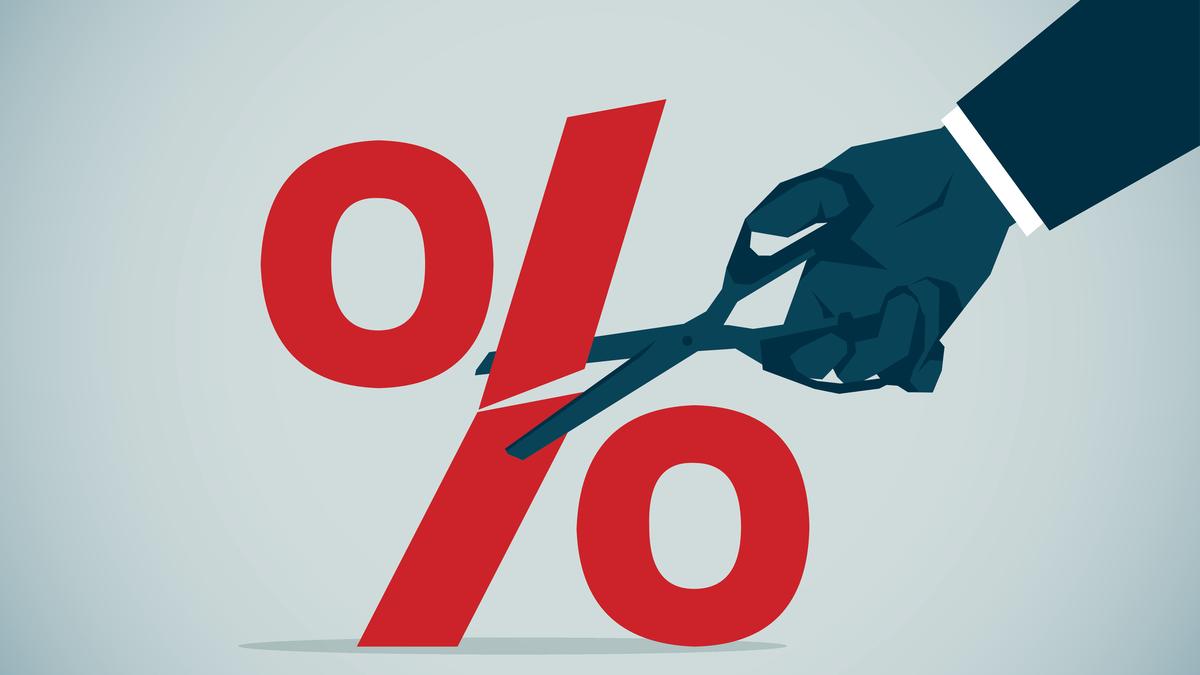For representative purposes.
| Photo Credit: Getty Images
The Reserve Bank of India (RBI) has cut key lending rates in two successive meetings, indicating a significant expansionary shift. In April 2025, the repo rate was cut by 25 basis points, and a further 50 basis point cut was announced in the recent meeting in June, bringing the policy repo rate to 5.5%. The RBI forecasts GDP growth of 6.5% for 2025-26, and inflation within the band of 4% +/- 2%, indicating sufficient room for these rate cuts.
The reduction in inflation has allowed for this expansionary move. The expectation is that it will spur private investment and lead to increased growth rates. But these moves have come on the back of a similar expansionary move on the part of fiscal policy, that of the recent cuts in income taxes. The fact that expansionary fiscal policy is being followed by expansionary monetary policy necessitates questions regarding the policy mix.
Policy co-ordination
Both fiscal and monetary policy impact aggregate demand and inflation. By reducing interest rates by way of monetary policy, investments increase and vice versa. An increase in government spending or a reduction in taxes increases aggregate demand and consumption through fiscal policy. Increasing aggregate demand leads to rising demand for goods and services, thereby increasing labour demand and wages, eventually leading to an increase in inflation. Therefore, stable macroeconomic outcomes require co-ordination between fiscal and monetary policy. The effects of expansionary fiscal policy can be nullified through contractionary monetary policy; this occurred in the U.K. and the U.S., where the announcement of tax cuts were met with a reluctance on the part of monetary policy to further cut interest rates, citing the inflationary nature of such fiscal policy moves. When monetary policy becomes ineffective, expansionary fiscal policy is required. In the wake of the 2008 recession, when interest rates had hit zero, government spending was increased to bring full employment.
Currently, one can characterise both fiscal and monetary policy in India as being expansionary. The income tax cuts announced in February 2025 were forecast to provide a significant boost to the economy. This raises a serious question of economic policy co-ordination. If both policy moves work as they are intended to, it would imply a significant increase in inflation. Does the RBI foresee muted inflation risks even as consumption and investment demand both show an increase? Or has the consumption tax cuts failed to show any impact on output expansion, implying an increase in fiscal deficit in the future?
Muted growth
Inflation fell to a six-year low of around 3% in June, with early monsoons and a good harvest leading to a significant fall in the headline inflation rate. This has provided the RBI with sufficient room for a reduction in the interest rate, though headwinds, such as U.S. President Donald Trump’s tariff wars and the growing conflict in Iran, loom on the horizon.
The economy does show signs of weakness. A recent SBI report indicated that credit growth has fallen to a three-year low of 9% in May 2025, while the unemployment rate has risen to 5.6% in May 2025 from 5.1% in April. Coupled with low inflation, these are indicative of an economy facing significant pressures on the aggregate demand front. The standard solution is to cut interest rates to boost investment in the face of slowing demand. What is of concern is the slowdown in the economy after the announcement of the income tax cuts. Households were expected to respond to the windfall gain in their disposable incomes by increasing their spending, thus leading to rising aggregate demand and inflation. On the contrary, though growth is forecast to remain steady at around 6.5%, these indicators show that the momentum might just be flagging.
Once could make the argument that these policies take time for signals to be converted into outcomes. Households may only convert the tax windfall into consumption when it actually materialises. But there are two problems with this argument. Firstly, it violates a central contention that individuals are inherently forward-looking, and can discount future windfalls into current spending. This assumption is central to the theoretical framework underlying modern inflation targeting. Secondly, if individuals are not forward-looking, and will only consume in the future, it would imply a sudden increase in future inflation when both investment and consumption increase, necessitating a sharp reaction for future monetary policy.
Deficit fears
Sufficient cuts to interest rates might provide the boost to the economy that income tax cuts could not. However, there is another problem. If output does not rise sufficiently, it would lead to a fall in tax collections, and a rise in the fiscal deficit. The only way to maintain the deficit is to cut government spending. If the government decides to cut revenue spending and not capital expenditure, the impact might fall on vulnerable populations that depend on such spending. With rising power of monopoly capital and a sustained shift towards profits away from wages, relying on normal market mechanisms may no longer achieve the desired outcomes. Sustained government intervention bringing about increases in wages and consumption power for those at the bottom of society is the need of the hour.
Rahul Menon is Associate Professor at O.P. Jindal Global University.
Published – June 23, 2025 08:30 am IST

